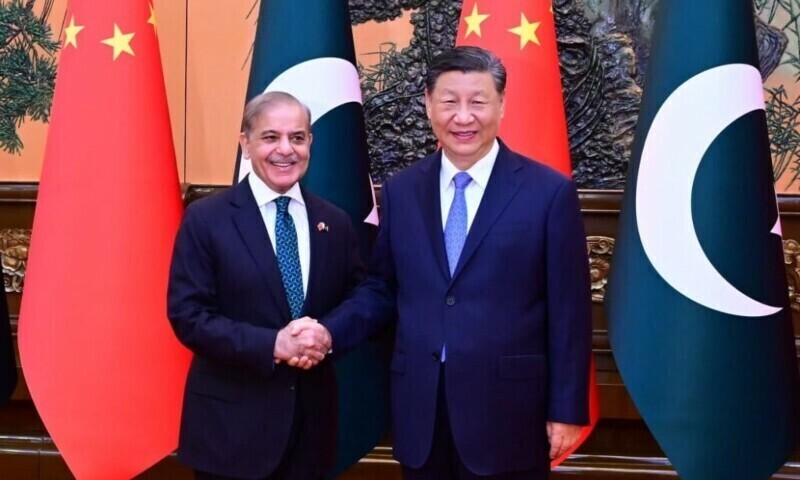
ISLAMABAD: The government on Tuesday announced that Prime Minister Shehbaz Sharif’s upcoming visit to China later this month will mark the formal launch of the second phase of the China-Pakistan Economic Corridor (CPEC-II), focused on industrial cooperation, after a delay of about five years.
“Prime minister’s upcoming visit will mark the formal launch of CPEC Phase-II, with both sides expected to set clear priorities and agree on tangible, measurable outcomes,” said an official announcement quoting Planning Minister Ahsan Iqbal, focal person on the multi-billion-dollar bilateral initiative, as saying at a high-level meeting.
The meeting was convened to review preparations for the forthcoming session of the Joint Cooperation Committee (JCC) of CPEC, as well as the prime minister’s scheduled visit to Beijing.
While the JCC is expected to meet in October, official sources said the prime minister will travel to Beijing at the end of this month to attend the Shanghai Cooperation Organisation (SCO) summit (Aug 31-Sept 1). On the sidelines, he is also expected to meet Chinese President Xi Jinping and Russian leader Vladimir Putin.
Both sides expected to set clear priorities, agree on tangible outcomes for the new phase
The planning minister stressed that the future of CPEC “must be anchored in quality rather than quantity,” emphasising that only carefully selected, high-impact projects should be advanced to ensure sustainability and institutional strengthening.
He also disclosed that during his recent visit to China, he had conveyed PM Shehbaz’s invitation to President Xi to visit Islamabad in 2026 to commemorate the 75th anniversary of diplomatic relations between Pakistan and China.
Underscoring the need to expand Pakistan’s trade and export footprint in China, the minister directed the authorities concerned to resolve visa processing delays on priority to facilitate genuine businesspersons. He also instructed the preparation of an outcome-focused plan to diversify exports, enhance industrial linkages, and maximise benefits from market access under CPEC.
On human resource development, Mr Iqbal highlighted the importance of utilising the 10,000 training opportunities offered by China across multiple sectors. He stressed the need for a transparent framework to ensure that the right people receive training aligned with institutional needs, enabling Pakistan to secure durable capacity-building gains.
The meeting also reviewed progress in priority areas, including the Multan-Sukkur Motorway, IT graduate training, computational infrastructure for artificial intelligence (AI), industrial relocation, industrial parks, mining, special economic zones, and agriculture.
It was decided to conduct data-driven studies on China’s industrial relocation trends and to map market segments where Pakistan has export strengths.
The minister noted that with China importing goods worth over $2 trillion annually, Pakistan should strategically aim to capture at least $30-50bn of this trade by building competitiveness and sectoral readiness.
He directed completion of an outcome-oriented study to identify high-potential export sectors, with the goal of creating an exportable surplus, attracting sustained investment, and strengthening the balance of payments over the medium term.
Calling for policy continuity and institutional reforms, the minister stressed the need for close engagement with the private sector, academia, and research institutions in areas such as industrial cooperation, technology, agriculture, energy, and human resource development.
According to projections, AI could contribute Rs24.9tr ($88.31bn) to Pakistan’s economy by 2030, raising the projected GDP of Rs171tr by 14.56pc. Agriculture, which makes up 24pc of GDP, could see 20+30pc productivity gains through AI-powered precision farming, while manufacturing and mining (15.1pc of GDP) may achieve 20-25pc improvements via automation.
Similarly, fintech (2pc) and the software industry (1.5pc) are projected to grow 20-30pc, while energy (3.8pc), defence (3.5pc), law & judiciary (1pc), and international collaborations (2pc) also hold 10-20pc growth potential, the minister said.
Published in Dawn, August 20th, 2025
